Some time ago, I took the decision not to buy or own manufacturing equipment for making our books. I’m not against being a bona fide printer; I have owned and run print shops before. But unless you are in a ‘dead’ industry like letterpress where 1950s equipment represents the best it will ever be, the need to invest and keep up to date means the equipment tends to drive the sales. I wanted to make our books the way I wanted, to the standards I wanted and not to be deflected by the need to meet monthly repayments or utilisation targets.
Although you can make great books entirely by hand (like, for example, Book of Hours, made c1330AD), some equipment is helpful for speed and accuracy, and this is the basics of what we use. It is a fundamental tenet of our philosophy that technology must maintain or improve standards and so everything we use, any change from the proven technology of the past, is judged against that criterion.
click on images to enlarge
1. A Computer running Photoshop. You can’t just receive an image and press ‘print’.
When you shift from one medium to another (screen to paper) or one scale to another (art on the wall to art on the page), colour and perceptions change. It’s important to try and understand these shifts and translate them into the visual language of print. Photoshop gives you the tools to do this.
2. A Monitor. You don’t have to have an expensive monitor, just a consistent one.
The human brain is not very good at remembering, with any accuracy, specific colours, but it is brilliant at detecting difference. We use a basic Eizo monitor because we can get close to the dull, lack of brightness that is printing on paper. We are looking for problem colours, colour shifts and issues around brightness and clarity especially when we shift from RGB to CMYK colour space. When we get an image, we look to see what is important in it and try to create and maintain a sense of difference and structure. For instance, working on an image, perhaps you are unable to recreate the exact shade of green in a tree. This isn’t necessarily a problem, the eye is unlikely to notice the wrong green; it will, however, notice differences in the shades of green within that tree. You need to recreate the difference, not the exact colour, because the difference is what matters.
3. A Press. Because you do have to print something.
In the mid 2000s I spent time researching all our options for printing, looking at using both digital and offset litho printing. I wanted to print our books on uncoated paper, and so that ruled litho out on quality as well as cost. I’m not saying you can’t print litho as well as digital on uncoated papers, but it is more difficult. As for digital, although some other digital presses delivered superficially better results with zero intervention to the files, only the HP Indigo allowed full flexibility on colour intervention, printing on any stocks, with finer screens, special colours and mixed grain directions. In other words, it behaved like a conventional press. It is capable of printing some of the most delicate, bold, dramatic or sublime colour. The HP Indigo’s colour rivals gravure at its best while the text is so black it could be an impressionless letterpress.
4. A sewing machine. If you want the book to open flat and to last then you have to section sew.
Although you could sew everything by hand, our bindery uses a Muller Martini semi-automatic sewing machine, which was supplied by Oscar Friedheim so long ago that they can’t find any record of it. On the other hand, there is more kit coming onto the market, such as the Smyth F3088 with Digital 88 front end feeder. However, the cost of this type of automation is high and needs to be weighed carefully against your own utilisation. Ultimately, all that matters is clean sewing, not too tight and without broken threads.
5. Foil blocking press.
Artisan Books have a standard label that obviates the need for blocking on the face or on the spine but still needs a plate marked area created to recess it. Foil blocking presses are necessary in any bindery. If you are foil blocking, the best results will always be from brass rather than magnesium dies. The strength of brass allows for no shoulder and gives a very sharp and crisp line. It will last for many more impressions than magnesium and, although that may not be an issue in a short run, brass will always look better.
6. A Kettle. A print job without a cup of tea is unthinkable.
I personally like Yorkshire Tea. Teabags are fine but it really must be brewed in a pot. The pot must be warmed and I don’t want to get into an argument, but I always put the milk in first. No sugar. Local and ethnic variations on this custom are quite acceptable.
To make one last point, I remember one of the most beautifully printed books I have seen was made in 1975 on Monadnock paper on an office Xerox. It looked wonderful, was black only and the printer had to polish the glass before each impression. The point being, printing is not just about equipment; it is to do with attitude and expectations too.
Stay tuned for a series of posts and videos about custom bookmaking from our friends at Artisan Books and connect with them on Twitter @ArtisanBook and Facebook!
Read more about how HP is Powering Up Publishing!

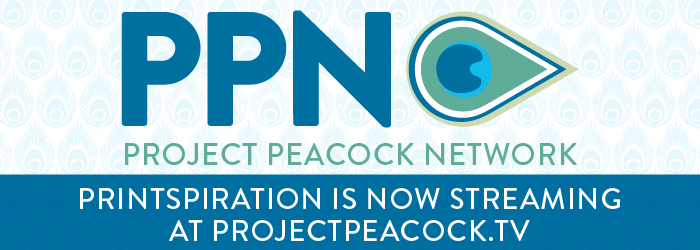
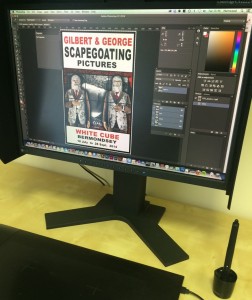
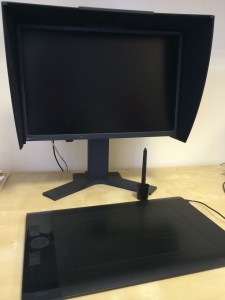

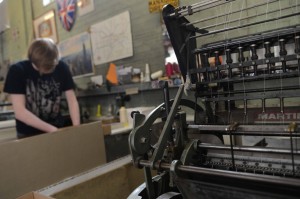
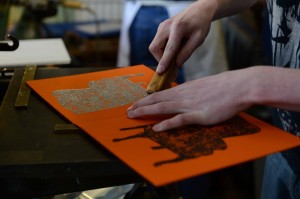
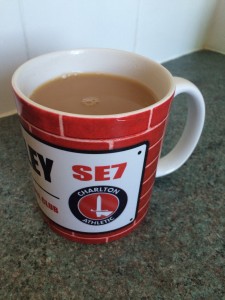











10 Responses
I want to own micro industry which can make exercise books what kind of machines required?
Lots of answers for that… size of book, will all the pages be the same in them or personalized/customized… how many are you going to be printing, colors, finishing… hard cover/soft cover … all play a part in the press decision.
I thank you for the encouragement!!This information has helped me tremendously to move forward in the process.
Hi, thanks for this insightful article. I’m currently looking into what it would take to set up a press and be able to print and bind small runs of books. I’d be fine starting in black and white and I’m not too picky on format at this point. What’s a good à next step for me to figure if I have the budget? Thanks !
Connect with Martin Pugh on LinkedIn… he is my short-run go-to for all things bookbinding! https://www.linkedin.com/in/martin-pugh-48504631
This was extremely helpful! Thanks a lot!
Thank you for this! When I realized I wanted to own my own publishing company, I wrote down my expectations and such, name for the business and what I’d like to focus on, to start – then I went online filed for the LLC, applied for my EIN, setting up my website and social media pages now. I’m really looking forward to all of this. In a couple months I’ll be launching my website and a few months after that, I’ll be releasing my first novel. 🤩 And I hope to do the same for many other Individuals
Good luck!
What about a guillotine or a nipping press? Aren’t these necessary, as well, assuming I already have a teapot? I’m having difficulty finding a machine to press the books and form the crease. All I have found so far is the Schmedt PräForm.
Also, which foil stamping machine do you recommend? Most of the machines I am finding do not hold a die big enough for the entire cover.
Have you looked at C.P. Bourg?